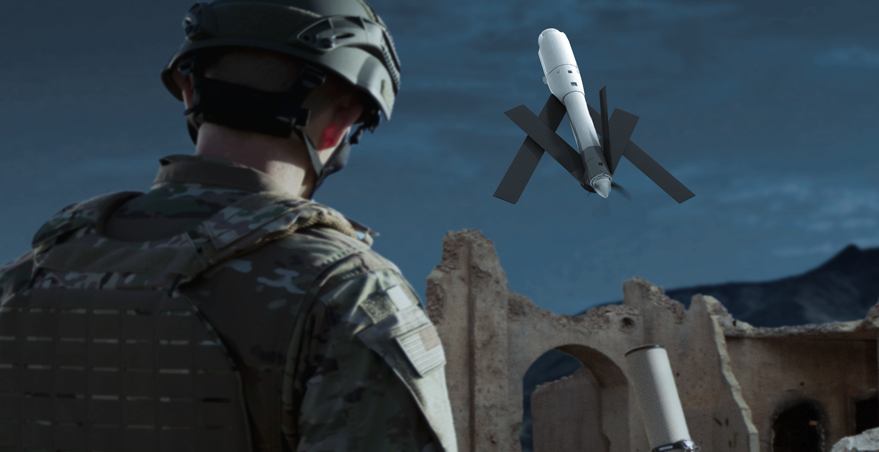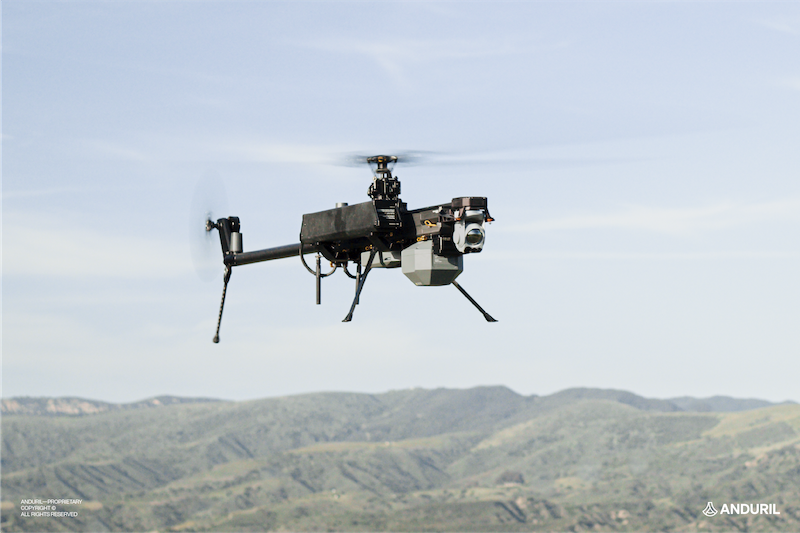Fort Worth-based helicopter manufacturer Bell Textron Inc has revealed its Aircraft Laboratory for Future Autonomy…

IN DETAIL: ASPI report Defence’s budget falling over next three years
The Canberra-based Australian Strategic Policy Institute (ASPI) has calculated that Defence spending will actually fall slightly up to 2025-26, despite the urgency expressed in last month’s Defence Strategic Review. However, spending on defence innovation will rise slightly within this constrained funding envelope.

“This year’s Defence budget reflects the urgency of the demands upon Defence to the extent that it includes the initial spending on the nuclear-powered submarines and the first response to the DSR, despite there being only very approximate estimates for how that spending is to be scheduled and for the savings that will pay for them,” says ASPI in its annual budget brief, published in late-May.
Titled ‘The Big Squeeze’ the brief adds, “Between 2023-4 and 2025-6, Defence funding, excluding compensation for adverse foreign exchange movements [and not including the Australian Signals Directorate], drops from $154.0 billion to $152.5 billion.
“The only increase in the Defence budget over the next three years is compensation for the increased cost of imported military equipment flowing from a fall in the value of the Australian dollar.”
However, Defence still plans to establish and fund its Advanced Strategic Abilities Accelerator (ASCA) in order to strengthen the Department’s innovation capabilities and get advanced and asymmetric technologies into frontline service more quickly.
“Innovation was announced as one of the government’s six priority areas, following the release of the DSR, specifically ‘Lifting our capacity to rapidly translate disruptive new technologies into ADF capability, in close partnership with Australian industry’,” says the brief.
Some $900 million will service this priority. This figure includes $748.4 million that will go directly to funding the Australian Strategic Capability Accelerator (ASCA) with the remainder supporting AUKUS Pillar 2 activities. Of the $900 million set aside to accelerate innovation in the forward estimates, approximately $600 million of this comes from existing projects, and $300 million will be new money that will need to be found as part of the $7.3 billion in the forward estimates.
It is not clear at this stage what capabilities will be considered under the AUKUS pillar II activities and therefore it is not clear what overall costs might be associated with this endeavour in the forward estimates. EX2 understands the program for AUKUS Pillar 2 is being handled by Defence’s Strategic Policy Division; no information on Pillar 2 has been released as yet.
Over a decade, government has announced $3.4 billion will be allocated to fund the ASCA, all of which will be met from Defence’s existing resources to deliver a cost neutral outcome, says ASPI.
However, that represents a net increase in the Department’s spend on defence innovation of $557 million or approximately $56 million annually. A rise of that magnitude suggests a portion of the money for funding the technology element of AUKUS will come from the DSTG budget of around $600-800 million. That’s consistent with both official calls for the group to align its funding and resources more closely to AUKUS objectives and with the somewhat limited nature of its current activities closely related to the agreement.
Starting on 1 July, ASCA will ‘focus on defined missions, solving the most relevant technical issues, and taking a more flexible and agile approach to procurement’. Following 18 months it will test whether the funding allocated is adequate. The Accelerator will be situated inside Defence for now and a group of three senior officials within the Department will be responsible for its oversight.
Whether this will prove to be the right model to deliver the intended effects, including the embrace of risk and fast fail/fast learn mindset of successful innovation systems, is yet to be seen.
Defence’s existing innovation programs, particularly the Defence Innovation Hub, appear not to have performed as well as they might. So channelling additional resources into that area without first having created and tested a new administrative support structure in the form of the ASCA might be imprudent, ASPI points out.
‘The Big Squeeze ‘says that whilst funding of $3.4 billion or $340 million on average each year to ASCA does not represent the total planned innovation spend within the defence budget over the decade, it does still appear modest especially compared to our AUKUS partner the US. The US Department of Defense spends more than US$120 billion per year on research, development, testing, and evaluation, including more than US$15 billion for early-stage science and technology.

DSR authors expressed a clear view that ‘the ASCA must be an unencumbered entity outside of Defence that receives capability priorities from Force Design Division and works with industry to develop innovative asymmetric capability solutions’. The importance of this separation from Defence in order to disrupt existing processes and deliver success is emphasised by many experts and practitioners. The ASPI budget report cites the Pentagon’s Defence Innovation Unit in Silicon Valley as an example.
“With limited funds available, the work of the ASCA might usefully begin by clarifying the range of technologies it considers most important to support” states ASPI, pointing out it is unclear how the current concept of Strategic Industry Capabilities and Priorities (SICPs) will be affected by the creation of the ASCA and the review of defence industry strategy.
“To help industry and Defence, it’s important to determine the degree to which the technologies highlighted by AUKUS and the DSR align with those identified as critical under SICPs and to arrive at a common list of technologies with preferred status,” says ASPI.
That should go a long way towards resolving the problem of Defence sponsoring RD&D projects but then failing to purchase from Australian industry the material and components inputs to the military equipment it helps deliver.
“Within that framework a case can be made for two additional measures,” adds ASPI. First, there’s a need for stronger support for small businesses engaged solely in RD&D defined as critical when bidding for assistance under Defence’s industry assistance programs not only for innovation but workforce skilling and exports. Second, those materials and components should be given priority by Australia in its negotiations with the US and UK on work share agreements under AUKUS.
Finally, the available evidence suggests that economic gains are likely to come from the generation of spillovers in the form of new technologies and new skills which move from Defence-sponsored RD&D to boost productivity in other areas of the economy, says ASPI. Economic modelling to help refine understanding of how defence and adjacent industries can contribute to broader economic outcomes. The Defence industry policy is still to help establish a strong, resilient industry base in this country which can contribute to broader national economic objectives. Opportunities should be developed to build out the necessary data in Australia to make better informed policy decisions in this area, says ASPI.
Contributions from the Department of Industry Science and Resources’ (DISR) recently established National Reconstruction Fund could notionally add to the industry development funding Defence has available. However, the $15 billion budget set aside for reconstruction is spread over seven years, divided between seven industry categories and guarantees only $1 billion for the kinds of technologies most relevant to Defence, leaving a figure of perhaps $50 million each year for AUKUS, DSR and other technologies directly relevant to the ADF.



